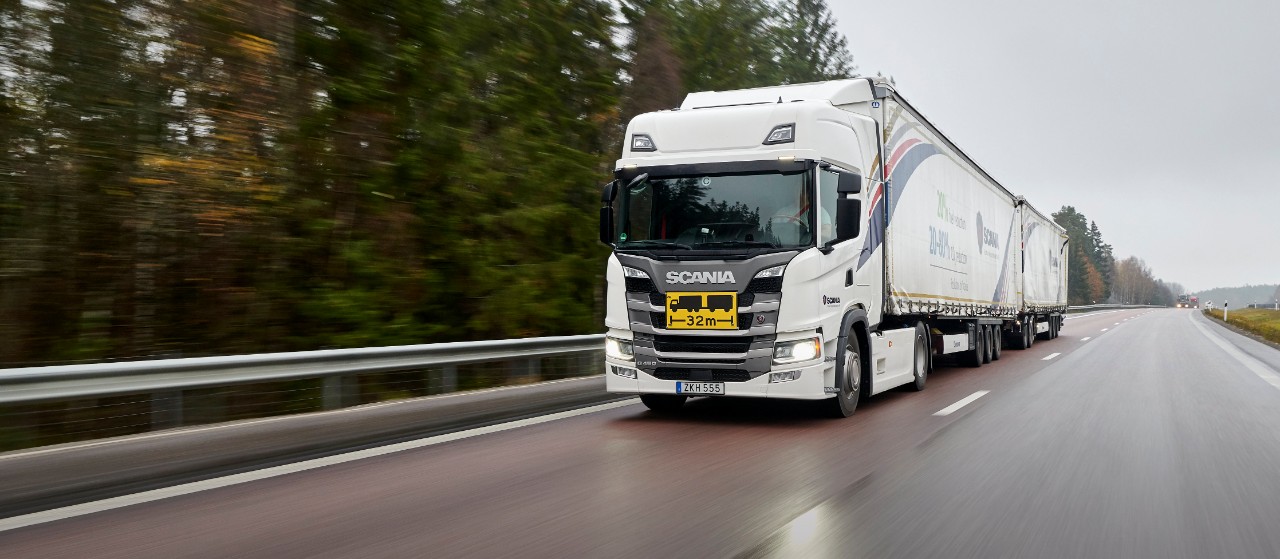
Transport lab
Scania Transportlab is a commercial transport company that is fully owned by Scania. Transportlab’s fleet of 45 trucks, 120 trailers and five coaches are used for a significant part of the company’s internal transportation needs, including local distribution, long-haulage and employee transport. Transportlab also serves as a test platform for new products and services.
Transportlab’s haulage assignments include carrying goods, mainly axles and gearboxes, from Scania’s factory in Södertälje, Sweden, to its production site in the Dutch city of Zwolle. The return cargo consists of transport racks for the axles and gearboxes.
Transportlab trucks also distribute goods between production units in Södertälje and the surrounding Mälardalen region of Sweden. In addition, Transportlab is responsible for employee transport via the Scania JobExpress buses that carry many Scania workers to and from Stockholm and Södertälje.
Sustainability is a core aspect of how the Transportlab operates. Three aspects are vital: environment/climate, work environment, and traffic safety.
Since 2008, Transportlab has had a core focus of making its transport assignments more efficient, for example with regard to filling rates and schedules. Driver efficiency and Eco driving are also continuing priorities. Together with using fossil-free fuel for transports wherever test needs allow, this has led to a reduction of carbon emissions by about 90 percent.
Towards a fully electric fleet
In 2021 the Transportlab began transitioning from using internal combustion engine vehicles running on fossil-free fuel in its local operations to eventually making the fleet fully electric. There are currently nine battery-electric vehicles in operation, and by mid-2025 this number is expected to increase to 15.
There is also a lot of effort to ensure that Transportlab’s drivers have a good work environment - “no stress” and “safe behaviour” are the watchwords. Traffic safety is a key issue, too. There are alco-locks fitted in all trucks, schedules that set out fixed working hours and load securing instructions, among other safety initiatives.
Scania Transportlaboratorium has a total of 63 full-time staff with 54 drivers, and achieved a turnover of SEK 182 million in 2023.